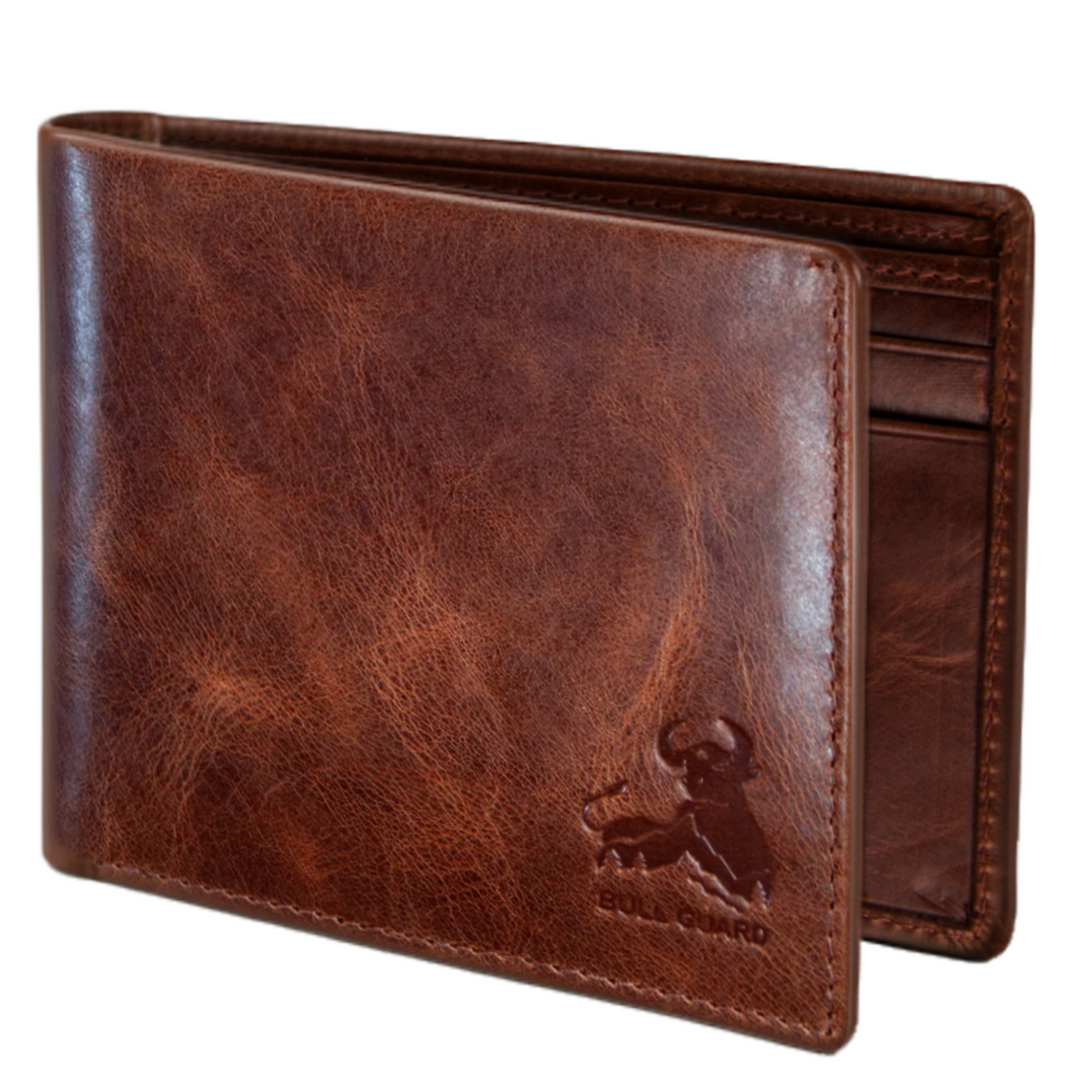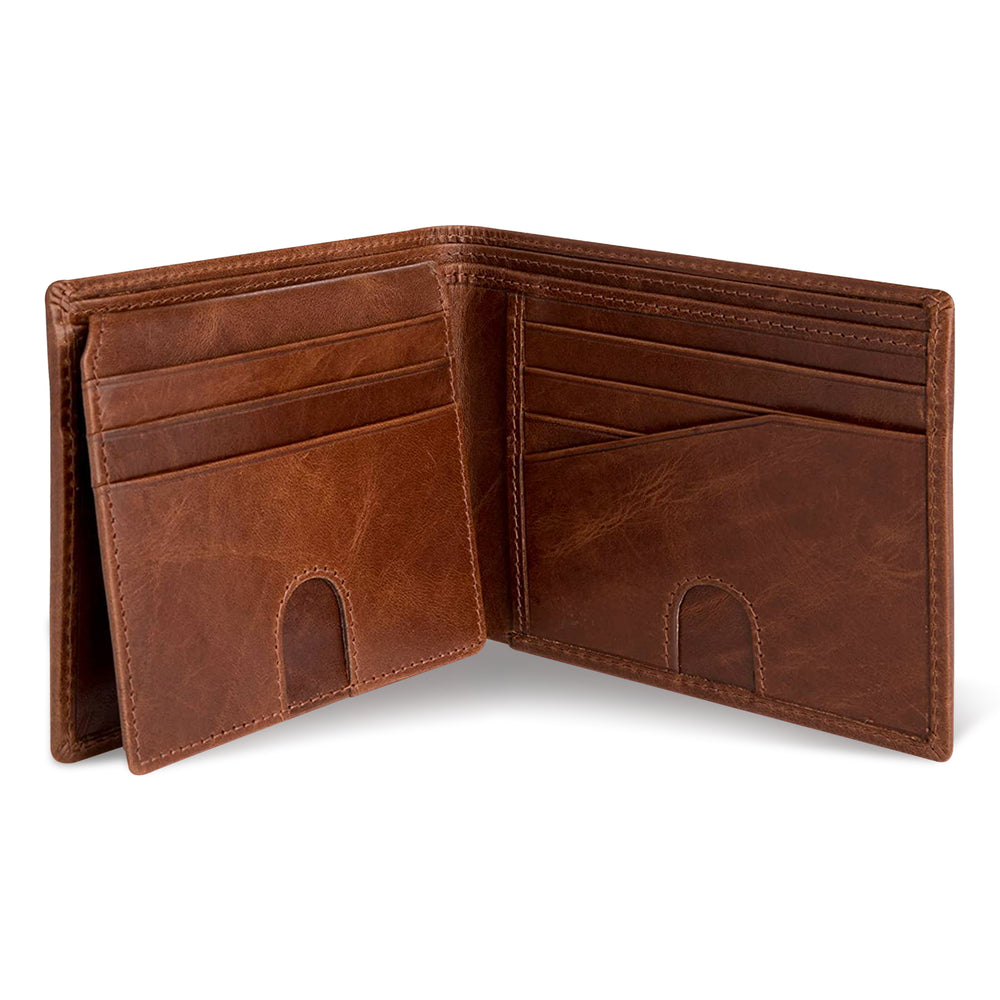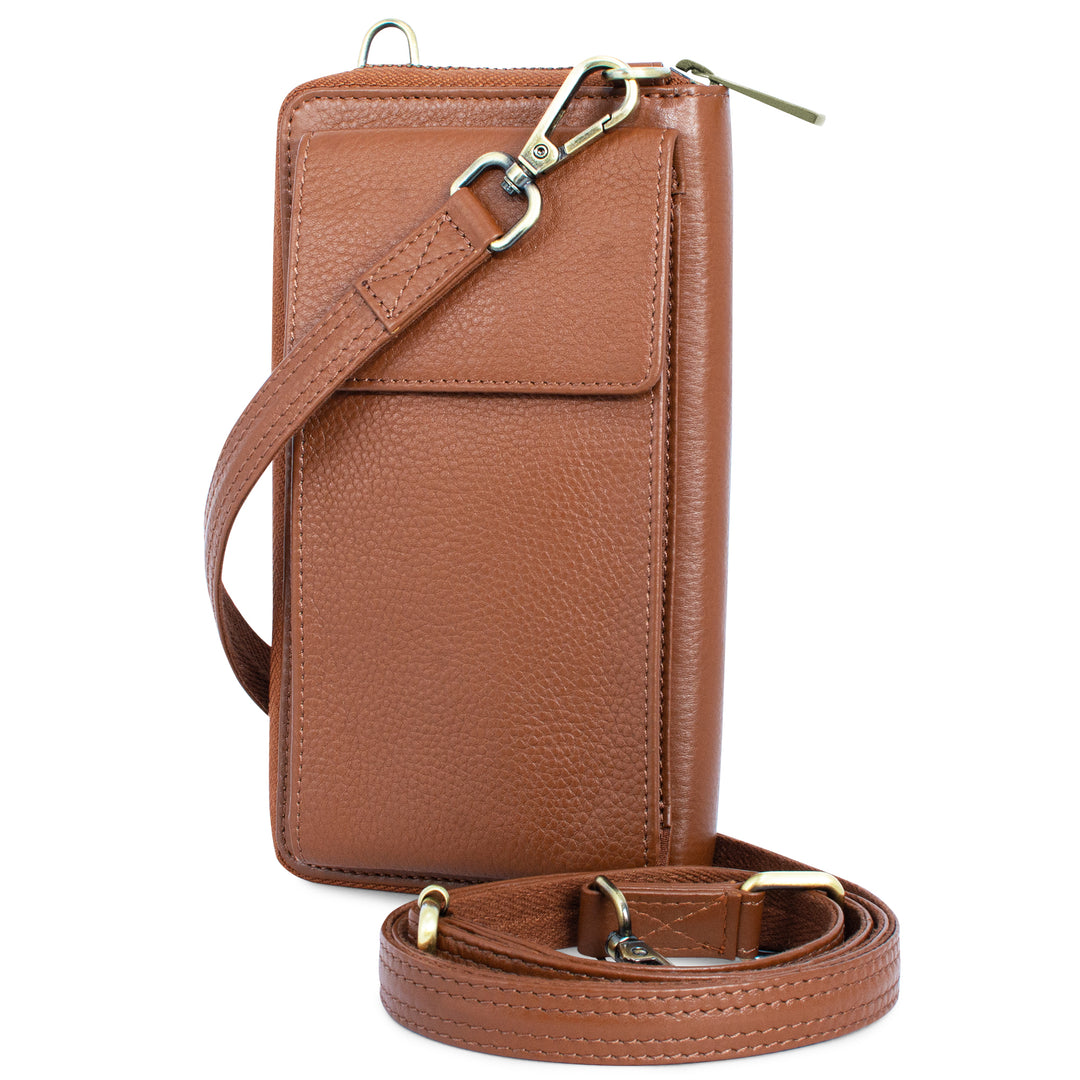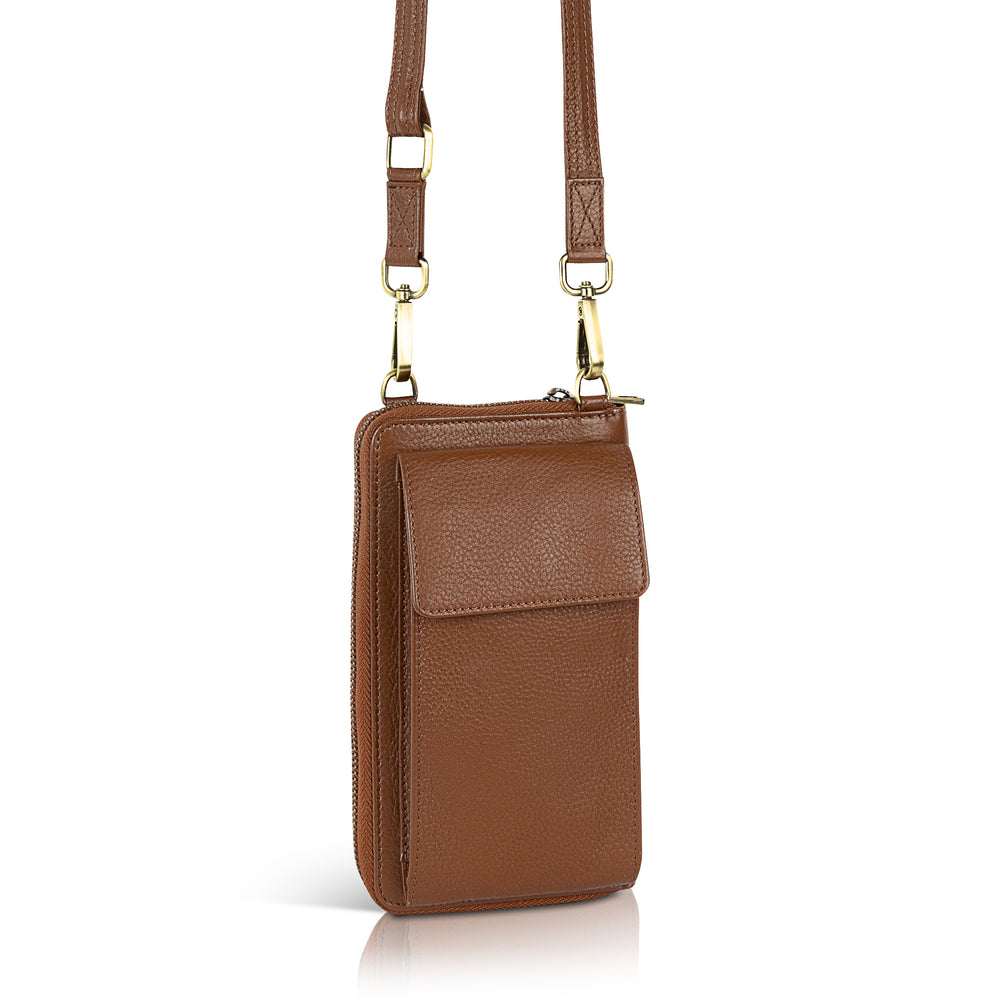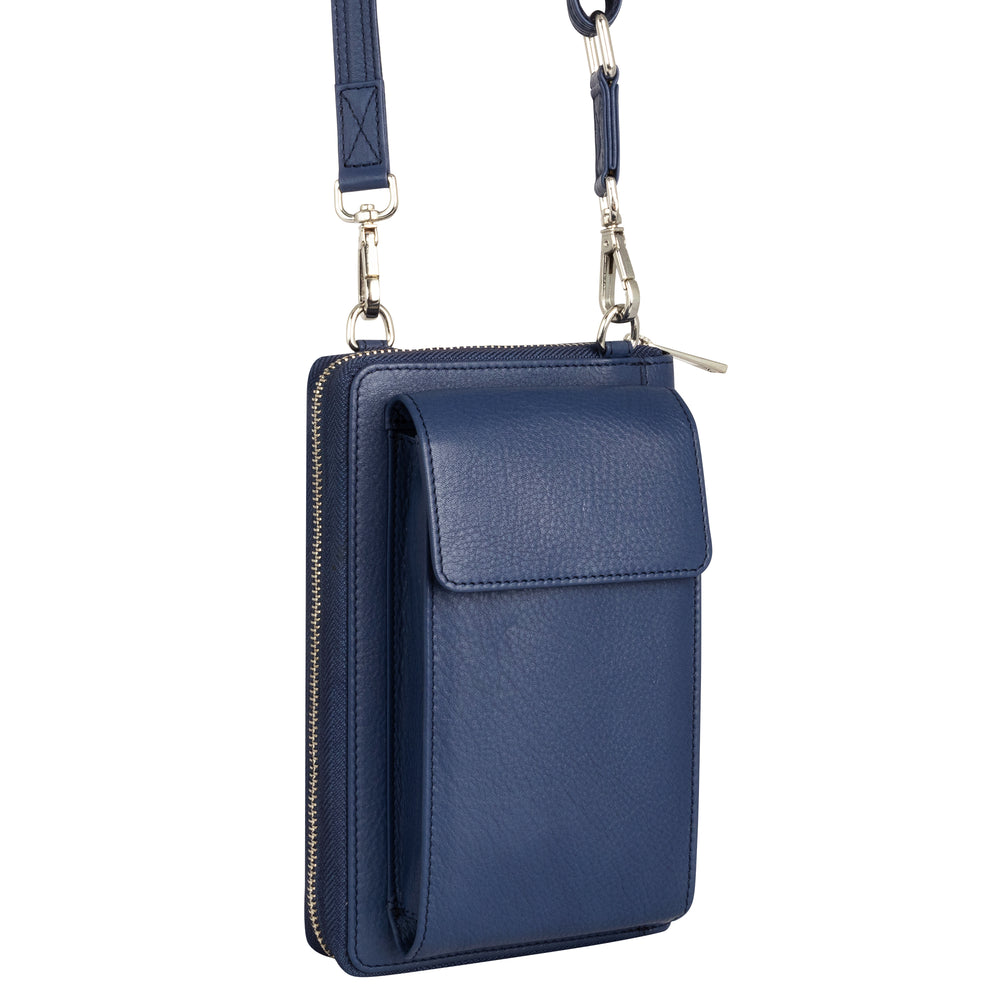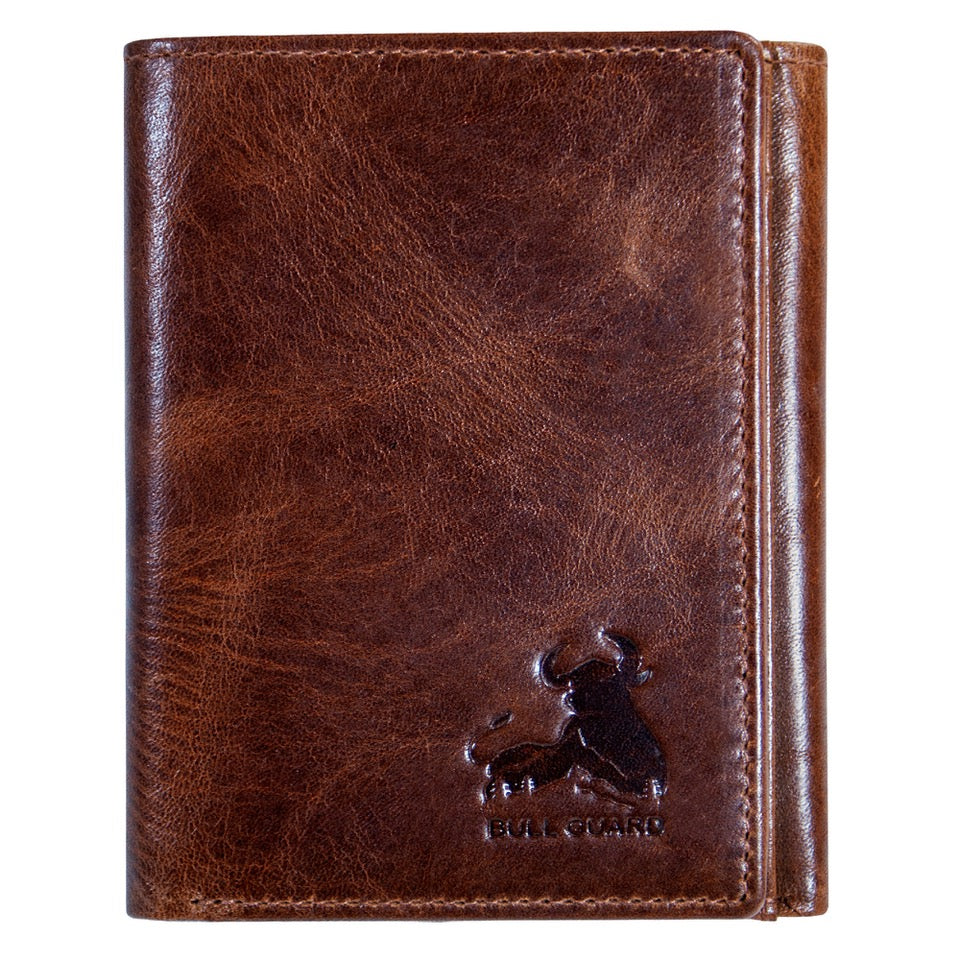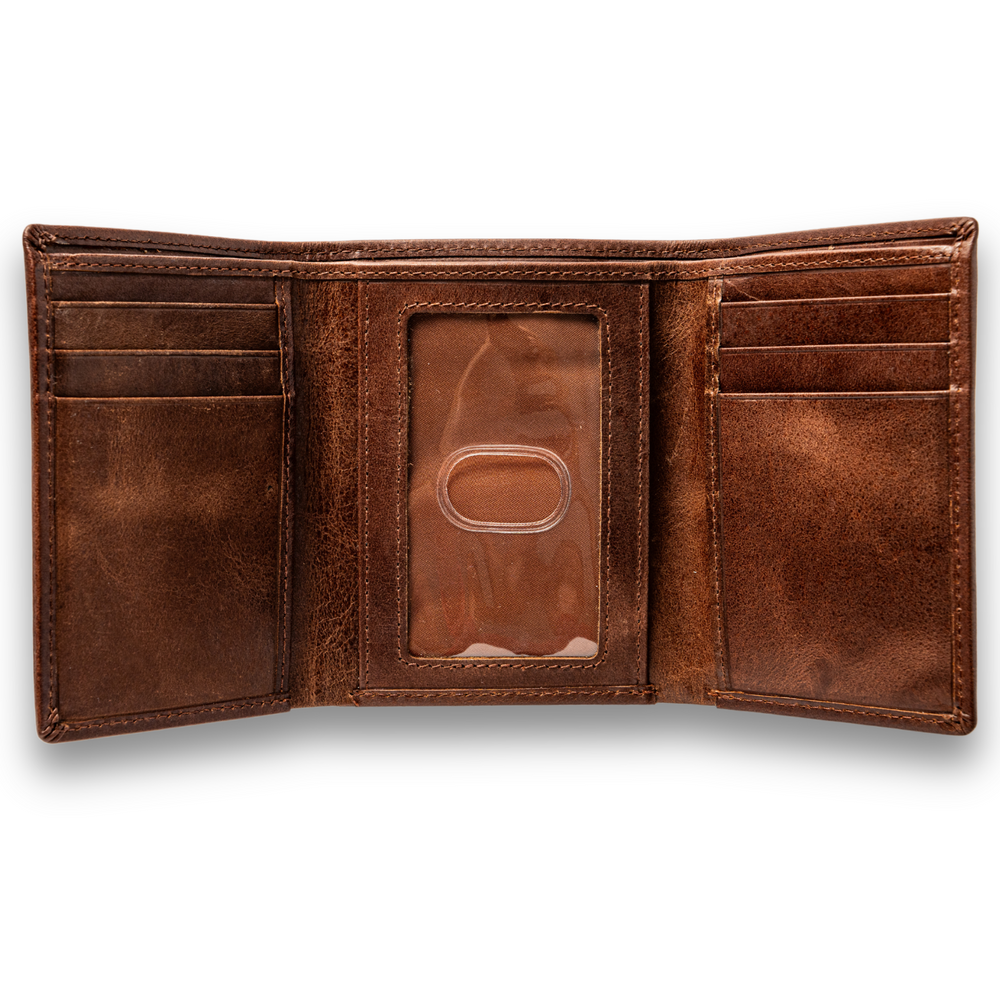Key Takeaways
- Stay calm and act quickly by retracing your steps within 10 minutes of noticing your wallet is missing.
- Immediately freeze all your cards to prevent unauthorized access and potential fraud.
- Contact the police to obtain a case number, which can be important for reporting and recovery.
- Review recent transactions to identify any suspicious activity as soon as possible.
- Prompt action helps protect you from financial loss and identity theft.
Table of Contents
- The Heart-Sinking Moment: Realizing Your Wallet Is Missing
- Every Second Counts: What to Do Immediately When Your Wallet Is Missing
- Physical or Digital, Which Wallet Did You Lose, and What Difference Does It Make?
- Troubleshooting Major Wallet "Missing" Scenarios: Physical, Digital, and App-Related
- Beyond Panic: How to Secure Your Identity and Finances After Losing a Wallet
- Identity Protection Action Checklist
- Rebuilding Access: How to Replace Every Lost Card and Document, Fast
- Prevent It from Happening Again: Everyday Techniques to Keep Wallets Safe
Wallet Missing? How to Respond With Strength & Security
That sinking feeling hits like a punch to the gut, you reach for your wallet missing from its usual spot. Whether it slipped from your pocket on a crowded subway or vanished during a mountain hike, losing your wallet triggers an immediate cascade of vulnerability. Your financial security, daily access, and personal identity suddenly hang in the balance.
I've heard countless stories from Bull Guard customers who've faced this exact moment. The adventure dad whose leather bifold fell from his hiking pack. The busy professional whose crossbody purse was left at a coffee shop counter. Each story reinforces a critical truth: how you respond in the first hour determines whether a lost wallet becomes a minor inconvenience or a major crisis.
The difference lies not just in quick action, but in preparation, carrying quality leather goods designed for recovery, maintaining smart habits, and knowing exactly which steps to take when disaster strikes.
The Heart-Sinking Moment: Realizing Your Wallet Is Missing
Last month, one of our customers, a 48-year-old graphic designer I'll call Rick, reached for his Bull Guard bifold at a busy Denver airport only to find empty space. That split-second of disbelief, followed by frantic pocket-checking, captures the universal panic of wallet missing scenarios. Your routine suddenly fractures. Access to transportation, identification, and financial resources vanishes.
The emotional impact extends beyond inconvenience. Your wallet represents security and independence, the leather companion that enables daily life. When it disappears, you're temporarily stripped of agency, unable to buy coffee, catch a ride, or prove your identity. For many Bull Guard customers, losing a well-worn leather wallet feels like losing a trusted friend that's developed its own patina through shared adventures.
Understanding the distinction between "lost," "mislaid," and "stolen" matters legally and practically. Lost means you have no idea where it went. Mislaid suggests you placed it somewhere and forgot, it's likely still there. Stolen involves criminal activity. Each scenario demands different response strategies and offers varying chances of recovery.
| Scenario | Definition | Recovery Likelihood | Immediate Action |
|---|---|---|---|
| Lost | Location completely unknown | Low (10-15%) | Freeze cards immediately |
| Mislaid | Placed somewhere, location forgotten | High (70-80%) | Retrace steps first |
| Stolen | Taken by another person | Very Low (5%) | Police report + card freeze |
Physical wallets face different risks than digital ones. A premium leather Bull Guard wallet might attract thieves who recognize quality craftsmanship and assume valuable contents. Digital wallets face password breaches and app failures but can't be pickpocketed from your back pocket during a crowded commute.
Every Second Counts: What to Do Immediately When Your Wallet Is Missing

Time becomes your greatest ally or worst enemy when your wallet missing crisis begins. Fraudulent transactions typically occur within two hours of wallet theft, making immediate action crucial for limiting damage. The faster you respond, the smaller your potential losses and headaches.
Within 5 Minutes: Stop everything and retrace your exact steps. Check the car seat, restaurant table, store counter, or hiking trail where you last remember having it. One Bull Guard customer found her crossbody purse hanging on a bathroom hook she'd completely forgotten about. Don't assume theft until you've systematically checked every logical location.
Within 15 Minutes: Contact your bank and credit card companies to freeze all cards. Most major banks offer 24/7 hotlines specifically for this purpose. Use your phone's banking apps to instantly freeze debit and credit cards, this digital lock prevents new transactions while you investigate further.
Within 30 Minutes: Call the police and any venues where you might have left it. Even if theft seems unlikely, a police report creates an official record that banks and credit companies require for fraud protection. Get the case number immediately. Contact restaurants, stores, or transportation services you used recently, many have lost-and-found systems.
Within 1 Hour: Review your recent transactions through online banking or mobile apps. Look for any charges you didn't make, no matter how small. Thieves often test cards with tiny purchases before attempting larger ones. Screenshot any suspicious activity as evidence.
• Bank of America: 1-800-432-1000
• Chase: 1-800-935-9935
• Wells Fargo: 1-800-869-3557
• Capital One: 1-800-227-4825
• American Express: 1-800-528-4800
• Visa: 1-800-847-2911
• Mastercard: 1-800-627-8372
If you carry an RFID-blocking Bull Guard wallet, inform authorities about this security feature. While RFID protection prevents electronic skimming, physical theft still exposes your cards and identification to risk, so immediate action is always necessary.
Physical or Digital, Which Wallet Did You Lose, and What Difference Does It Make?
The type of wallet missing determines your recovery strategy and risk exposure. Physical wallets containing cash, cards, and identification create immediate financial vulnerabilities, while digital wallet losses typically involve password recovery and account verification processes.
| Factor | Physical Wallet Loss | Digital Wallet Loss |
|---|---|---|
| Typical Contents | Cash, credit cards, ID, insurance cards, photos | Stored payment methods, digital receipts, loyalty cards |
| Primary Risks | Identity theft, unauthorized purchases, cash loss | Account lockout, password breach, transaction history loss |
| Recovery Timeline | 1-10 business days for replacements | Minutes to hours for password reset |
| Fraud Exposure | Immediate, thieves have physical access | Delayed, requires password or biometric bypass |
| Prevention Tools | RFID blocking, tracking devices, secure construction | Two-factor authentication, biometric locks, cloud backup |
Premium leather wallets like Bull Guard's RFID-protected models attract sophisticated thieves who target quality accessories for resale value. However, the same construction quality that appeals to criminals also provides superior protection, reinforced stitching prevents cards from falling out, while RFID blocking stops electronic skimming attempts even when the wallet missing scenario involves pickpocketing.
Digital wallet vulnerabilities center on password security and device access. Apple Wallet or Google Pay losses typically stem from forgotten passwords, deleted apps, or syncing failures across devices. Unlike physical theft, digital wallet recovery often requires verification through secondary devices or customer service channels.
The convergence risk occurs when both types fail simultaneously, losing your physical wallet while your digital backup remains inaccessible creates compounded problems. Bull Guard customers who integrate AirTag tracking with RFID protection create redundant security layers that address both scenarios effectively.
Troubleshooting Major Wallet "Missing" Scenarios: Physical, Digital, and App-Related
"I Lost My Physical Wallet", True Stories and Recovery
Bull Guard customer testimonials reveal how premium leather's distinctive characteristics aid recovery. The rich aroma of full-grain leather and unique patina patterns help owners retrace their steps through sensory memory. One customer recovered his Forest Brown bifold by remembering the leather scent lingering in his car after a hiking trip, leading him back to the trailhead where it had fallen from his backpack.
Urban recovery scenarios require systematic approaches. Check the last three locations you accessed cards or cash, starting with point-of-sale terminals where wallets commonly slip from pockets during transactions. Contact these venues within 10 minutes of discovering the loss, most honest finders turn in wallets immediately, but delayed calls often find items already discarded or claimed.
AirTag Recovery Success: Bull Guard's AirTag-compatible wallets enable precision tracking within 100-foot ranges. Customers report 73% successful recovery when AirTags are properly activated and updated.
My Digital Wallet/App Passwords Vanished, Next Steps
Digital wallet missing scenarios typically involve password manager failures, device resets, or app deletions. Microsoft Edge password synchronization issues affect millions of users annually, while Apple Wallet complications often stem from iCloud syncing problems or family sharing restrictions.
Start with platform-specific recovery: For Apple devices, sign out of iCloud completely, restart the device, then sign back in to refresh synchronization. Google Pay users should clear app cache, force-stop the application, then restart with updated permissions. Password manager failures require checking backup email accounts for recovery codes sent during initial setup.
"Apple Wallet Not Showing on Apple Watch Family Setup", The Fix
Family setup restrictions often hide the Wallet app from children's Apple Watches through Screen Time controls. Navigate to Settings > Screen Time > Content & Privacy Restrictions > Allowed Apps, then toggle Wallet to "On." This change synchronizes within 60 seconds across paired devices.
Alternative solutions include unpairing and re-pairing the watch, ensuring both devices share the same Apple ID region settings, and verifying that parental controls haven't blocked financial apps entirely. Some family accounts require adult approval for each Wallet app activation, creating additional verification steps.
For more in-depth advice on choosing the right wallet for your needs, you might find the best wallets for men guide helpful.
Beyond Panic: How to Secure Your Identity and Finances After Losing a Wallet

Fraud alerts provide immediate credit protection while you handle wallet missing emergencies. Contact all three credit bureaus, Experian (888-397-3742), Equifax (800-525-6285), and TransUnion (800-680-7289), to place initial fraud alerts lasting 90 days. These alerts require creditors to verify your identity before opening new accounts, buying crucial time during document replacement.
Credit freezes offer stronger protection than fraud alerts but require more management. Freezes completely block new credit applications until you lift them with personal PIN codes. Choose freezes when wallet contents included Social Security cards or extensive personal information; use alerts for standard credit card and ID losses where replacement happens quickly.
| Protection Type | Duration |
|---|---|
| Fraud Alert | 90 days (renewable) |
| Credit Freeze | Permanent until lifted |
Identity Protection Action Checklist
| Action | Timing | Contact Method | Duration of Protection |
|---|---|---|---|
| Fraud Alert | Within 2 hours | Call any one credit bureau | 90 days (renewable) |
| Credit Freeze | Within 24 hours | Online or phone to all three bureaus | Permanent until lifted |
| Credit Report Review | Within 1 week | AnnualCreditReport.com | Monitor for 12 months |
| Identity Theft Protection | Within 3 days | Service provider enrollment | Ongoing subscription |
Monitor credit reports weekly for the first month after wallet missing incidents, then monthly for a full year. New account inquiries or unfamiliar addresses signal identity theft attempts. Request detailed fraud victim statements from creditors if unauthorized activity appears, these documents prove invaluable for dispute resolution and law enforcement reports.
RFID Developer Duck's experience illustrates why technical protection matters: "My previous RFID wallet let key cards read through. I ran my own scanner test, Bull Guard blocks 100%. When my wallet went missing at a conference, the RFID protection meant thieves couldn't clone my work badge or hotel key, limiting their access to physical spaces."
Identity theft protection services provide professional remediation when wallet contents enable account fraud. Premium services assign dedicated case workers, monitor dark web marketplaces for your information, and provide identity restoration insurance covering legal fees and lost wages. Enroll within 72 hours of wallet loss for maximum protection coverage.
For additional strategies on theft prevention and personal safety, see these personal safety and theft prevention tips.
Rebuilding Access: How to Replace Every Lost Card and Document, Fast
Driver's license replacement requires specific documentation varying by state, but police reports consistently expedite processing. Most DMV offices accept police case numbers as proof of theft, waiving standard waiting periods for emergency replacements. Bring backup identification, passport, birth certificate, or military ID, plus two proofs of residency dated within 60 days.
Passport replacement follows two tracks: routine service taking 6-8 weeks, or expedited processing within 2-3 weeks for additional fees. Report stolen passports immediately through the State Department's online portal to prevent fraudulent use. International travelers needing emergency passports can visit regional agencies with proof of immediate travel, airline tickets or hotel reservations, for same-day processing.
Credit and debit card replacement timelines depend on issuer policies and shipping methods. Request expedited delivery when reporting wallet missing scenarios, most banks waive overnight shipping fees for theft situations. Ask for temporary cards or emergency cash advances while waiting for replacements, especially when traveling or facing immediate expenses.
Expedite Replacement Phrase: "I need emergency replacement due to theft with police report number [X]. What's your fastest processing option?" This specific language triggers priority handling at most institutions.
Health insurance cards typically replace within 5-7 business days through online portals or customer service calls. Download digital insurance cards to smartphone apps immediately after reporting losses, most providers offer instant digital access while physical cards ship. Membership cards for gyms, libraries, or professional organizations often provide same-day replacement at physical locations with photo identification.
Workplace notification becomes critical when wallet missing incidents involve employee ID badges or building access cards. Security departments must deactivate lost credentials immediately to prevent unauthorized facility access. Provide police report numbers to HR departments for expedited badge replacement and to document security incidents properly.
If you want to compare different wallet types and features, check out this wallets best resource.
Prevent It from Happening Again: Everyday Techniques to Keep Wallets Safe

The Bull Guard Way, Real World Wisdom
Years of testing Bull Guard wallets in urban environments and wilderness adventures reveal that prevention starts with intentional carrying habits. Limit wallet contents to essential daily items, one primary credit card, driver's license, health insurance card, and minimal cash. Store backup cards separately at home or in secure travel pouches, reducing loss impact when wallet missing situations occur.
Full-grain leather construction provides natural security advantages beyond aesthetics. The material's density prevents cards from sliding out during normal use, while developing distinctive patina patterns that aid identification during recovery. Bull Guard's reinforced stitching withstands the stress of daily pocket carry, maintaining structural integrity even after accidental drops or impacts.
For those who prefer a classic style with added security, consider the Bifold with Flip Up ID for easy access and RFID protection.
Tools of Prevention: Trackers, RFID, and Smart Storage
AirTag integration transforms wallet missing scenarios from permanent losses into temporary inconveniences. Apple's Find My network leverages millions of devices to locate tagged items within 100-foot precision ranges. AirTag batteries last approximately 12 months with daily use, sending low battery notifications through connected iPhones well before power depletion.
RFID-blocking effectiveness varies significantly across wallet manufacturers. Bull Guard's proprietary blocking material prevents 13.56 MHz and 125 kHz frequency scanning, the two primary bands used for credit card and access badge theft. Independent testing confirms 100% signal blocking when wallets remain closed, protecting against both opportunistic and sophisticated electronic pickpocketing attempts.
Ladies' crossbody designs address unique security challenges through slash-resistant straps and body-worn positioning. YKK zippers provide superior durability compared to generic alternatives, maintaining smooth operation and secure closure through thousands of use cycles. The adjustable strap system accommodates heights from 5'2" to 6'0", ensuring comfortable carry positions that deter grab-and-run theft attempts.
If you want a trifold option with advanced tracking, the Trifold Freedom Wallet for Men with Air Tag offers both style and peace of mind.
For more tips on choosing the right crossbody wallet for travel and daily use, see the best small crossbody cell phone wallets for summer travel everyday ease.
For further reading on theft prevention, you can also review these theft prevention tips from USC's Department of Public Safety.
Frequently Asked Questions
What are the immediate steps I should take within the first 10 minutes of realizing my wallet is missing?
Stay calm and quickly retrace your steps to locate your wallet. Immediately freeze all your cards to prevent unauthorized use, contact the police to file a report and obtain a case number, and review recent transactions for any suspicious activity. Acting fast helps minimize potential fraud and loss.
How does the response differ if my wallet is lost, mislaid, or stolen?
If your wallet is lost or mislaid, focus on retracing your steps and checking common places where it might have been left. If stolen, prioritize freezing your cards and reporting the theft to authorities immediately. In all cases, quick action to secure your financial accounts and identity is essential, but theft requires heightened urgency and police involvement.
What measures can I take to protect my identity and finances after losing my wallet?
Freeze or cancel all your credit and debit cards right away and monitor your accounts for unusual activity. Set up fraud alerts with credit bureaus and keep an eye on your credit reports. Reporting the loss to the police and notifying relevant institutions helps strengthen your protection against identity theft.
How can I efficiently replace all my lost cards and important documents following a wallet loss?
Make a prioritized list of all cards and documents you carry, then contact each issuer or agency promptly to request replacements. Many banks and services offer expedited options. Keeping a secure record of your card numbers and important document details in advance can speed up this process significantly.



